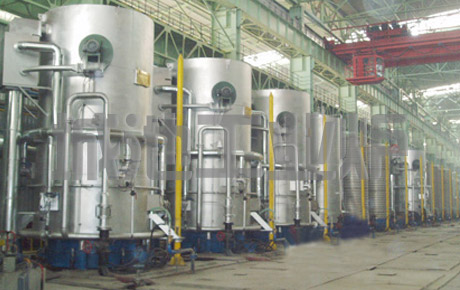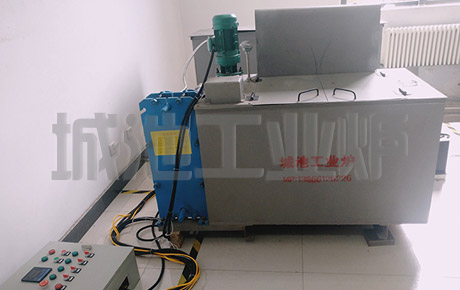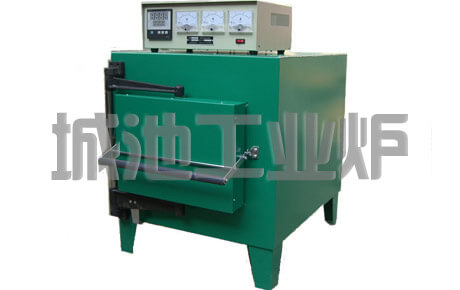Isothermal annealing
Keywords:annealing,isothermal annealing,cooling,heating temperature,oxidation,air cooling,annealing temperature,grains,heat treatment,decarburization,isothermal temperature,austenite,isothermal,cooling rate,annealing furnace
Isothermal annealing
Isothermal annealing is a special form of complete annealing and the development of complete annealing. Most of it is also used for heat treatment of sub-eutectoid steel and eutectoid steel.
Advantage: Isothermal annealing is now widely used in heat treatment practice. In particular, the annealing of alloy steel is almost completely replaced by isothermal annealing, which is because it has the following three advantages
A The operation time is short, and at the same time, the fuel or electricity required for controlling the slow cooling is also saved.
B Austenite decomposes at an isothermal temperature, so the structure and structure are uniform and can reach the desired structure.
C can make the alloy steel workpiece get a sufficiently low hardness after annealing. This is often unattainable during ordinary annealing.
1. Holding time: holding time should not be too long, because too long holding time, not only may cause the growth of grains, but also may cause oxidation and decarbonization of the surface of the workpiece, which also wastes fuel and reduces the production capacity of the furnace .
Therefore, the holding time can be calculated according to the following empirical data in addition to the full annealing holding time:Carbon steel: each centimeter diameter or thickness (at the maximum) is not less than 20 to 30 minutes: 20 to 30 minutes / cm.Alloy steel: According to the amount of alloy elements, increase by 25-40%.
2. cool down
Isothermal annealing cooling can be divided into three stages.
1) The first cooling stage (from annealing temperature to isothermal temperature):
In general, the cooling rate can be arbitrarily carried out, but it is better to keep it at about 150 ° C / hour. Therefore, this cooling stage is usually carried out in a sealed furnace, which can ensure that the cooling rate of each part of the workpiece is basically the same.
Cooling of large workpieces in one furnace is very uneconomical, so in production practice, the workpiece is often moved to another furnace for cooling. The temperature of this furnace is the isothermal temperature.
Sometimes, in order to speed up the first cooling rate, the operator often opens the furnace door to release the heat, which is not very good, especially for the unpacked workpieces, because it cools the parts of the workpiece The speed is different, on the other hand, it is easy to cause oxidation and decarburization of the workpiece.
2) Isothermal stage:
• Isothermal temperature: (The higher the isothermal temperature, the coarser the steel sheet structure and the lower the hardness.)
The isothermal temperature should refer to the isothermal transformation curve of the steel according to the required performance, and the general steel selection should be 80-100 ℃ below A1 based on the principle of isothermal temperature with a short transformation time. The lower the temperature, the higher the hardness.
If you want to reduce the hardness, you can choose 50 ~ 70 ℃ below A1.
The isothermal temperature of various commonly used steels can be found in the relevant tables. When there is no C curve data, the isothermal temperature can be selected to be about 30 ℃ below Ar1 of this type of work. This shows that the isothermal temperature data of each factory cannot be consistent.
Isothermal process can be carried out in the original heating furnace or in another furnace. Small workpieces can also be carried out in the salt bath or lead bath furnace.
• Isothermal time: The isothermal time of steel can be estimated by its C curve. (The isothermal time of various steels is independent of the size of the workpiece when the temperature of each part of the workpiece is consistent, but depends on the chemical composition of the steel.)
In order to complete the complete transformation of the inside and outside of the part, the time required is longer than that on the graph. Generally speaking, it is 1-2 hours for carbon steel and 3-4 hours for alloy steel.
3) Secondary cooling stage: [After the workpiece undergoes isothermal transformation, in theory, austenite has been completely decomposed to form a new structure (P). During cooling, regardless of the speed, the structure and hardness are What effect will it have. However, this is not the case in actual production, because there is often a part of A that has not completed the isothermal transformation, and in the subsequent cooling process, it may still produce a higher hardness structure, but the effect is not that great.
Therefore, when it is cooled again, it can be cooled in the furnace, in the air (even in water)
Air cooling is the most suitable.
In order to reduce the residual internal stress, it is generally cooled with the furnace to 500-550 ° C and then air-cooled.
If it is urgently needed, it can be cooled in the air to 300-400 ℃, and then cooled in water.
More Isothermal annealing:http://www.industrial-furnace.com/articles/isothermal_annealing.html







